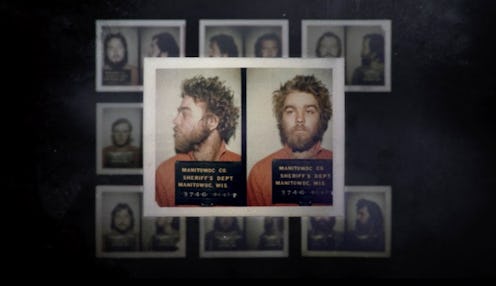News
This 'New York Times' Article Inspired 'MaM'

More than 10 years after its publication, the full impact of the New York Times article about Steven Avery's arrest for the murder of 25-year-old Teresa Halbach is just coming to light. The article that inspired the Making A Murderer creators indirectly caused the current frenzy surrounding Avery and his nephew Brendan Dassey's ongoing fight to prove their alleged innocence.
Monica Davey, a reporter for The New York Times since 2003, was assigned to cover the fallout from Avery's arrest for Halbach's murder, which came on the heels of Avery's high-profile push for criminal justice reform in the state of Wisconsin. The majority of the article is focused on how Avery's 2005 arrest might have resonated in the community of those who fight against wrongful convictions. "This case became something that could have had an enormously positive effect on the criminal justice system in this state, but now that's up in the air," Stephen Glynn, Avery's former attorney who is featured in Making A Murderer, told Davey back in 2005.
It's easy to see how the filmmakers, Laura Ricciardi and Moira Demos, began formulating some of their key questions posed throughout the docuseries upon reading Davey's article. One particular quote from Avery's brother Chuck about Avery's lawsuit could have been the inspiration for Demos and Ricciardi to pack up their New York City apartment and travel cross-country to investigate the allegations against Avery.
There are 36 million reasons why they should be doing this to him.
Throughout the docuseries, Demos and Ricciardi build extensively on the theory that Avery was allegedly at least partially framed by the Manitowoc County Sheriff's Office for Halbach's murder. The filmmakers specifically point to Sgt. Andrew Colborn and Lt. James Lenk, both of whom had been deposed in Avery's $36 million civil lawsuit, as possible conspirators whose motive was saving their own careers and saving the department from awarding Avery the payout. The Manitowoc County Sheriff's Office adamantly denies this. The lawsuit is far from ignored in Making A Murderer, and Demos and Ricciardi's initial clue about that vein of the investigation could have come straight from Davey's article.
Ten years later, the case is once again up in the air. In a new article published Friday, Davey revisited Manitowoc County in light of her original article's impact on the docuseries and Avery's renewed public prominence. While Dassey's lawyer states that he is "incredibly hopeful" about the positive response from the series, many Manitowoc residents are unhappy with the filmmakers dredging up ancient history. "We made our judgment, and the trial came to an end, and locally most people were in support of that,” Jason Ring, the president of the Manitowoc Area Visitor and Convention Bureau, told Davey. “Now it’s back — by no choosing or no doing of anyone in this community. So that’s the first point of injustice. That we have to live through it again.”
Now that Making A Murderer has once again brought Avery's case into the national spotlight, it's fascinating to reflect on what lead Demos and Ricciardi to begin their decade-long investigation into the possibility of Avery's innocence. Davey's article has had a wholly unexpected influence on popular culture, the filmmakers' lives, and the future of Avery's case.